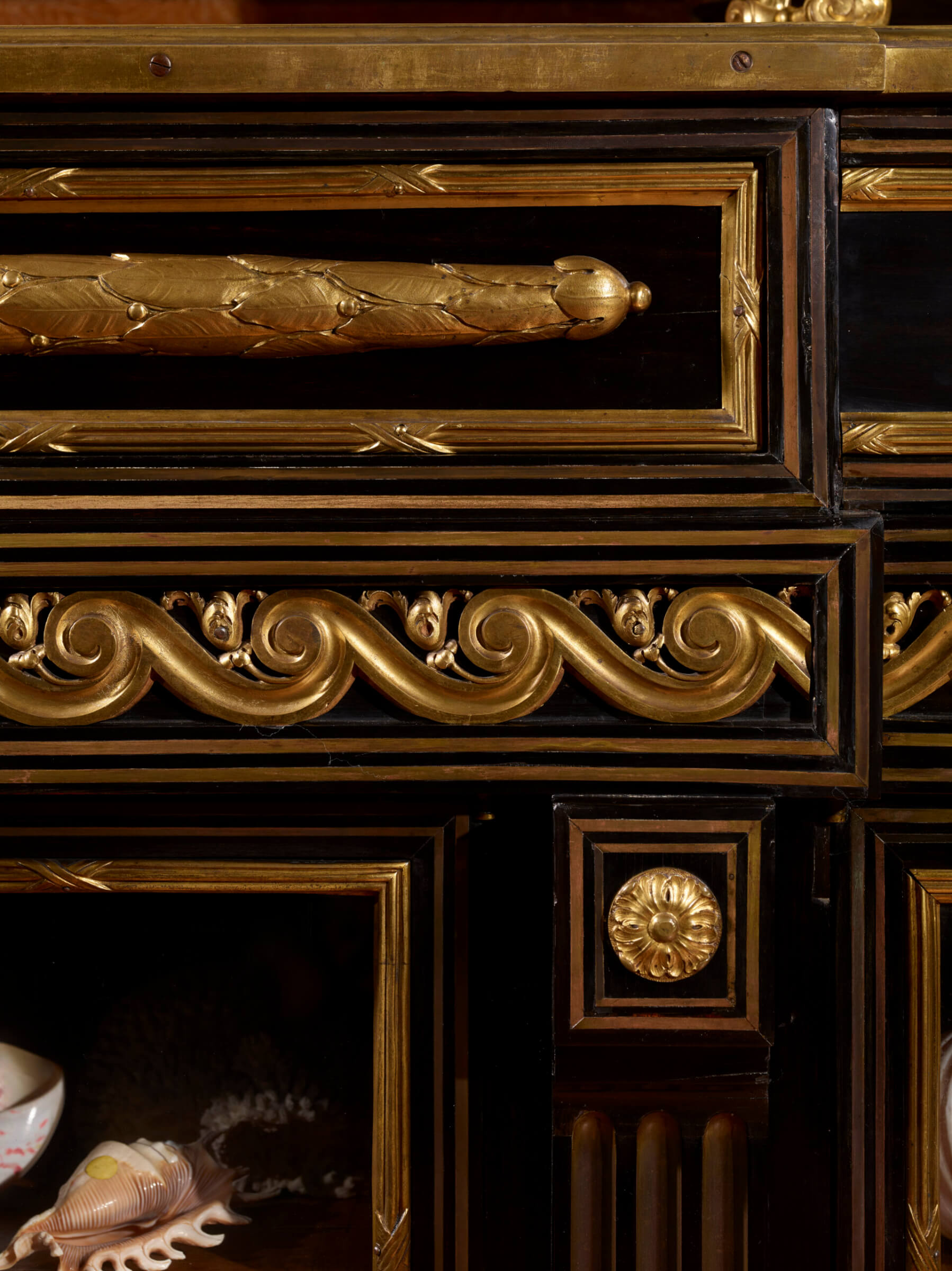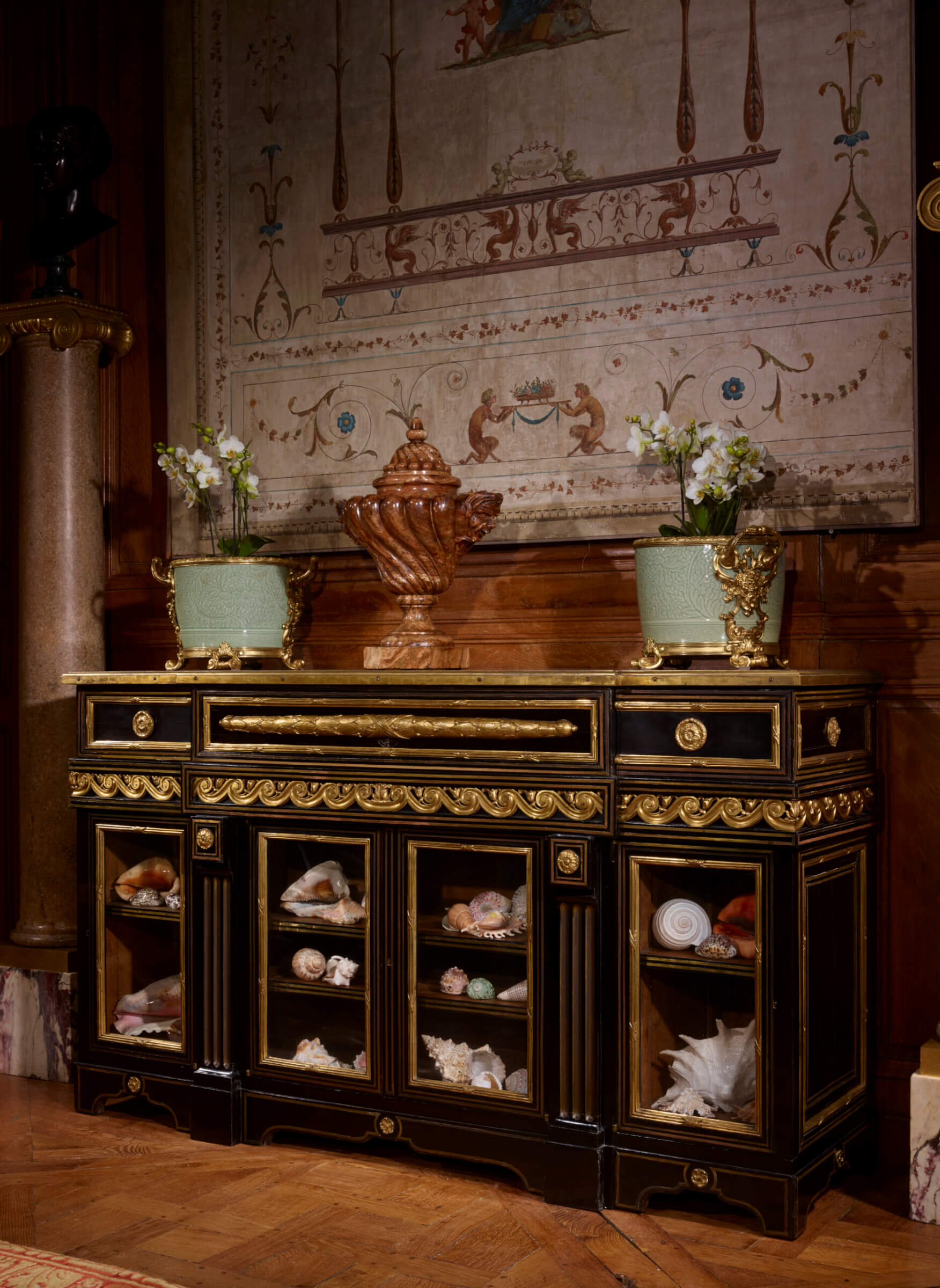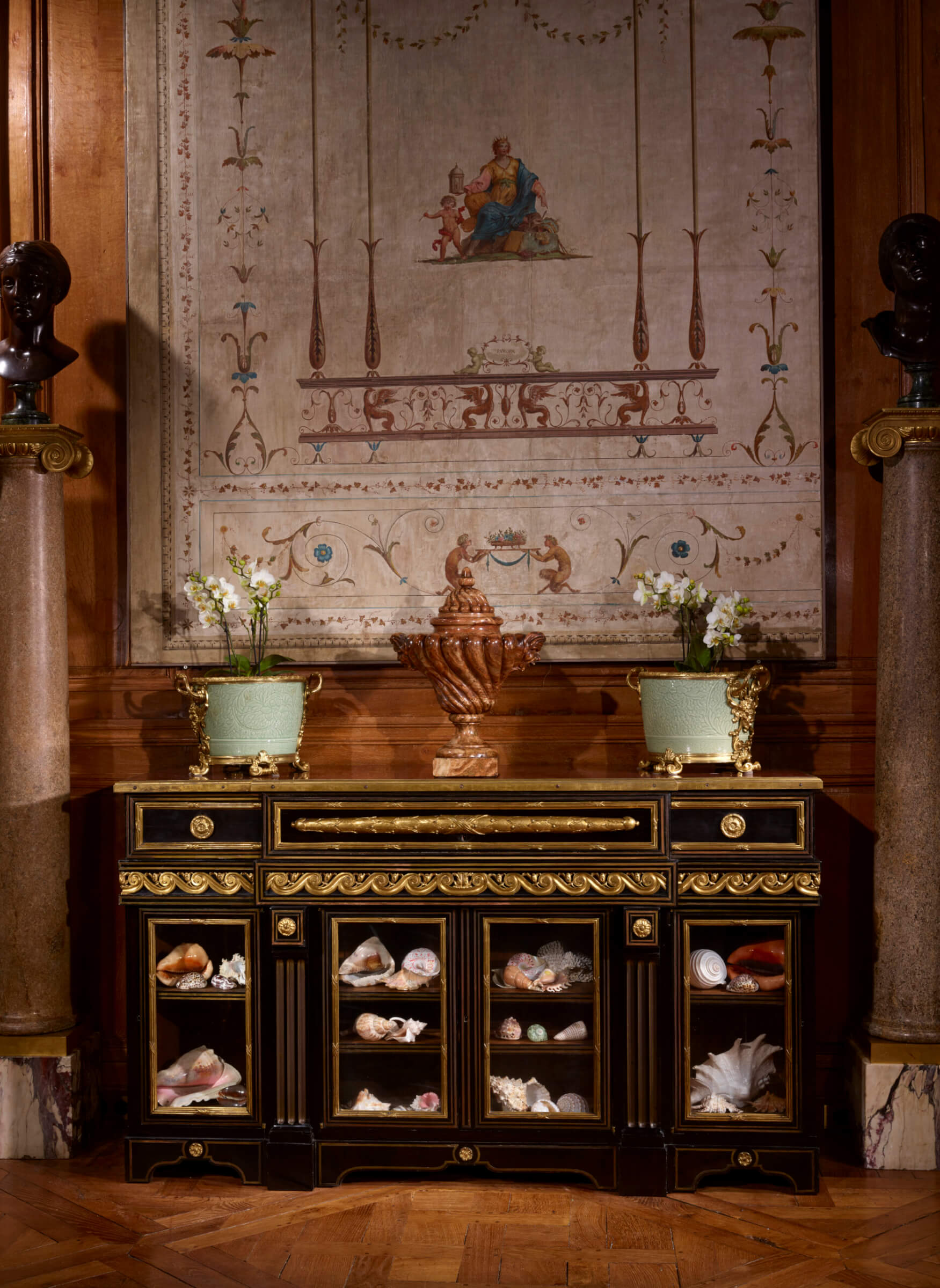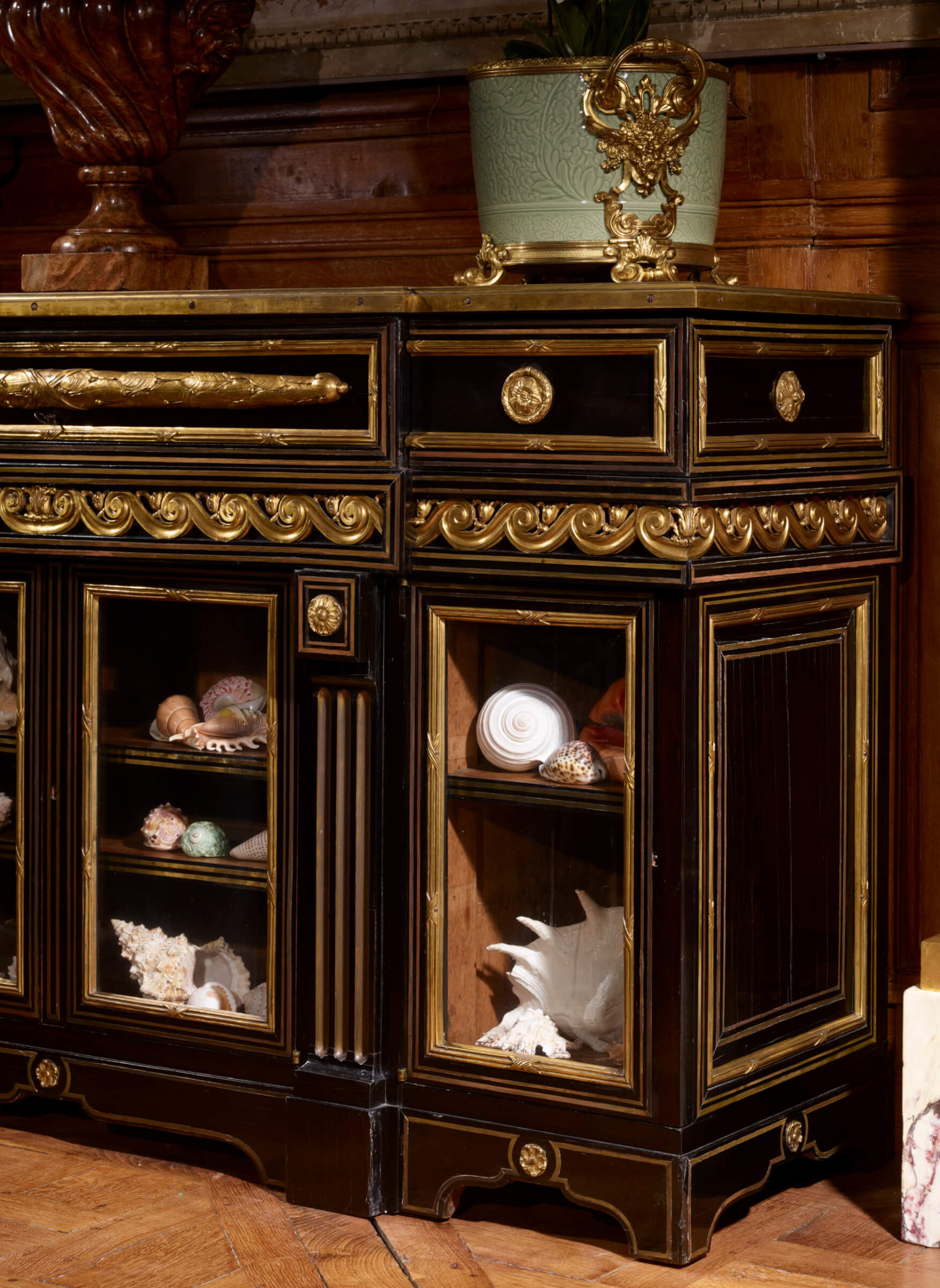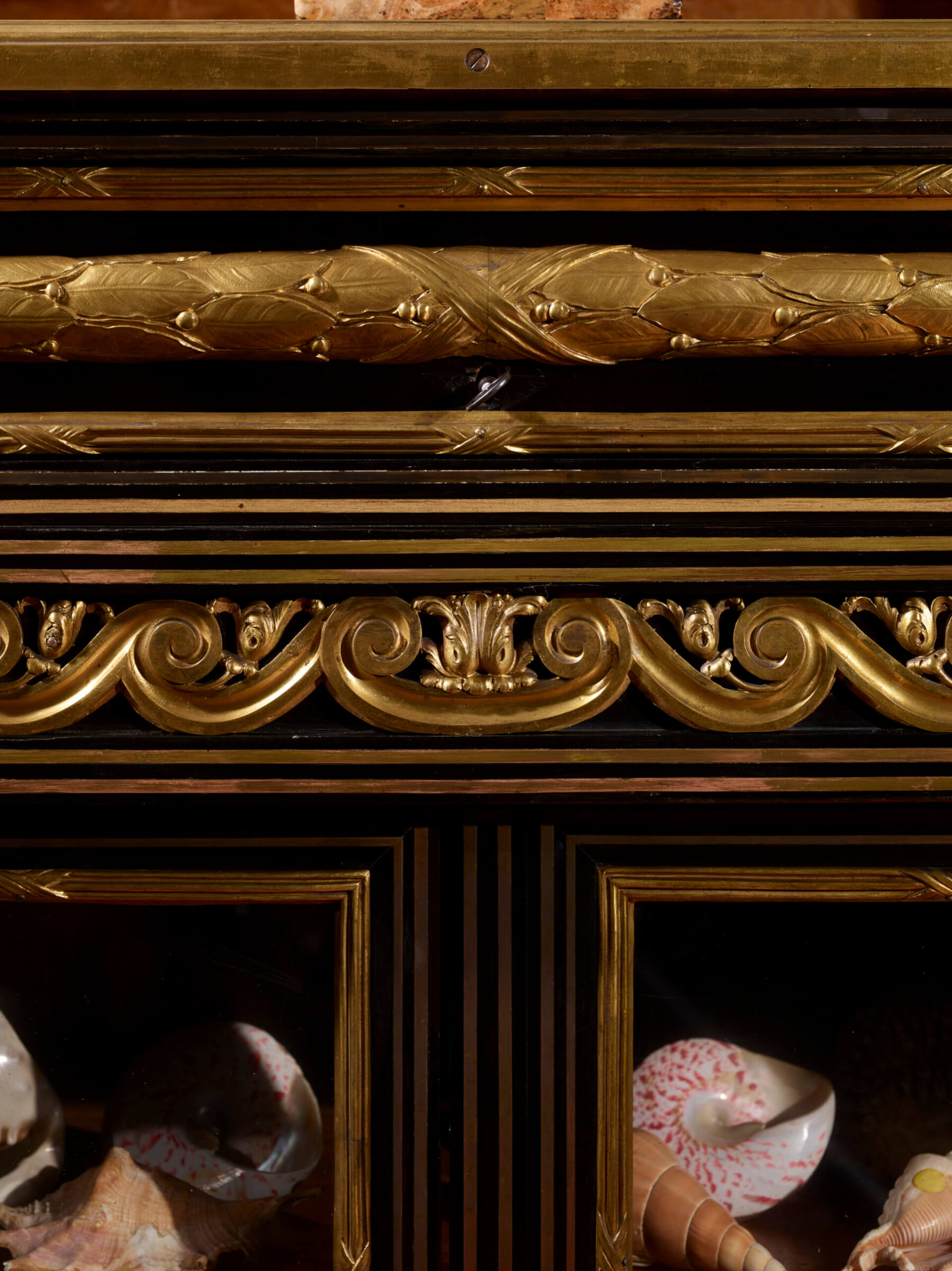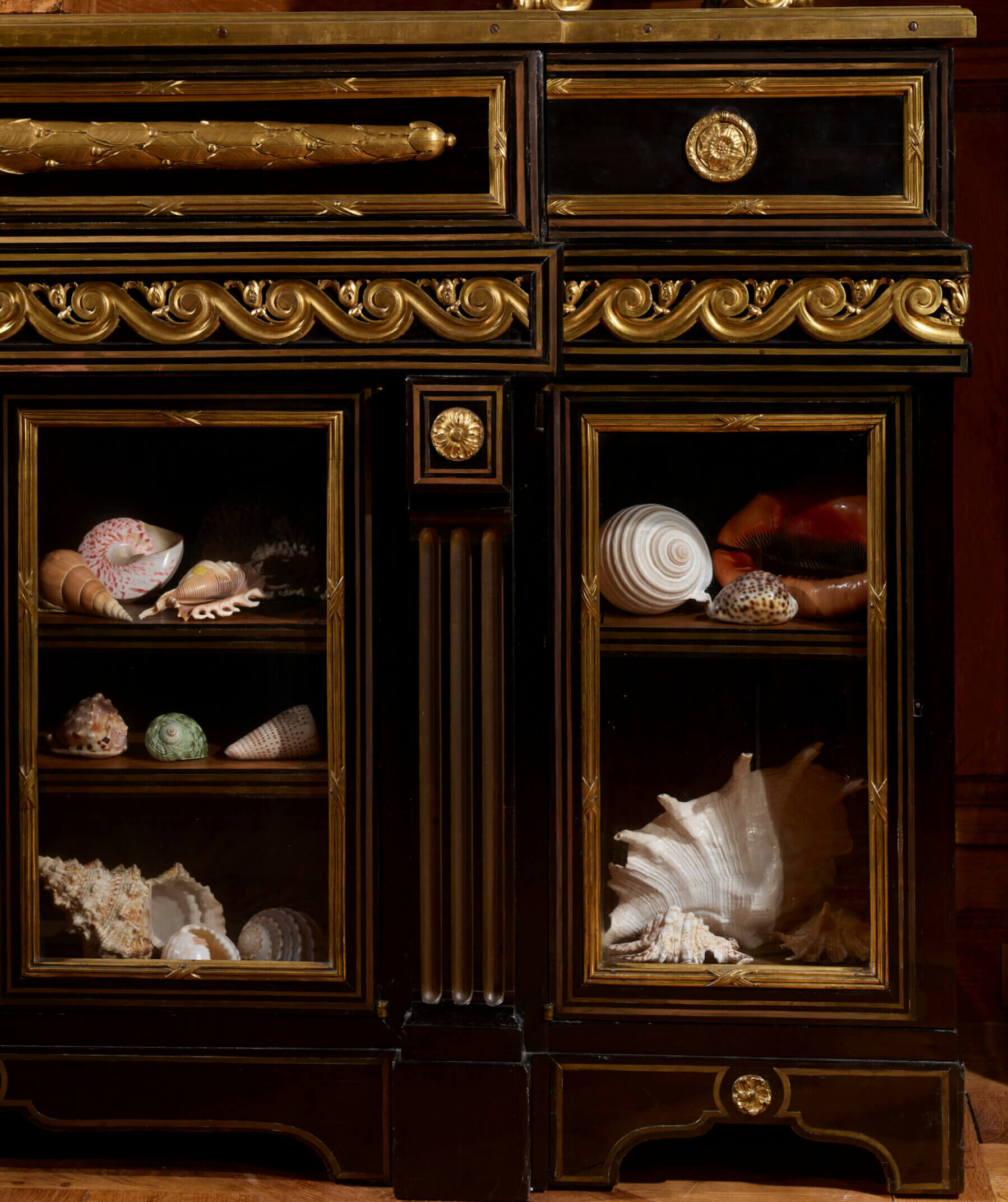

Executed for the cabinet of Ange-Laurent Lalive de Jully (1725-1779), Introducer of Ambassadors at Court.
Oak carcass; ebony and ebony veneers; gilt bronze; brass fillets; glass; red griotte marble.
H. 94 cm. (37 in.); W. 161.5 cm. (63 ½ in.); D. 49.5 cm. (19 ½ in).
STAMPS: JOSEPH once; and J.F. LELEU twice, who modified and adapted the piece of furniture around 1764, when the ‘Flemish’ cabinet of Lalive de Jully was reinstalled in the new private mansion he acquired at 4-6 rue de Ménars, Paris; stamp JME (Jurande des Menuisiers et Ebénistes) once.
MARKS AND INSCRIPTIONS: Seligmann, handwritten inscription in graphite, visible in the centre of an oval label of beige paper with a serrated contour and double red edging of the Maison Chenue, also bearing printed in red the mention: CHENUE / EMBALLEUR / 5 RUE DE LA TERRASSE-PARIS; 4068 inscribed in graphite on a circular white label fixed under the marble; presence of an inventory label printed in the name of Getty.
PROVENANCE: executed in Paris circa 1758-1762, en suite of a large bureau plat (flat desk), its cartonnier (file-case) and its clock, now kept at the château de Chantilly (inv. OA 357), of three other ‘coquilliers’, for the cabinet of Ange-Laurent de Lalive de Jully (1725-1779), in his private mansion, located at what is now n°. 366 rue Saint-Honoré, near the Place Vendôme in Paris; transferred around 1764 to the new private mansion acquired by Lalive de Jully at 4-6 rue de Ménars, Paris; acquired at the same time as the hôtel on rue de Ménars by Jacques-Philippe de Choiseul-Stainville (1727-1789), Marshal of France and brother of Étienne-François, Duke of Choiseul-Stainville (1719-1785), minister of Louis XV; transferred circa 1785 to the Marshal’s new private mansion on rue d’Artois, Paris, where it remained until its auction on 23rd November 1789; Seligmann collection, Paris in the 1920s; sold by Seligmann to Sir Philip Sassoon (1888-1939); collection of Sir Philip Sassoon, Bt, 25 Park Lane, London; inventoried twice in the library before 1927 and in 1939; thence by inheritance, collection of his sister, Sybil Rachel Betty(1894-1989), née Sassoon, Marchioness of Cholmondeley, at Houghton Hall, Norfolk; sale of Works of Art from Houghton Hall, Christie’s London, 8th December 1994, lot n°. 80; acquired at the auction by Ann and Gordon Getty; The Ann & Gordon Getty Collection, Christie’s auction in New York, 22nd October 2022, lot n°. 28; acquired at the auction by Galerie Steinitz in Paris.
EXHIBITIONS: Three French Reigns (Louis XIV, XV, & XVI), Loan Exhibition in Aid of the Royal Northern Hospital at 25 Park Lane, London, from 21st February to 5th April 1933, cat. n°. 541 of the exhibition (repr. in the catalogue in the Large Drawing Room, p. 75, fig. 65); Portrait of an English Country House: Houghton Hall, Houston, The Museum of Fine Arts, 21st June to 20th September 2014, San Francisco, Legion of Honor, 18th October 2014 to 18th January 2015, Nashville, Frist Art Museum, 13th February to 10th May 2015; Aux sources du Néoclassicisme : l’incroyable mobilier de monsieur Lalive de Jully, Château de Chantilly, Musée Condé, from 2nd March to 29th April 2024 (for the first time since the 1770 auction, the “coquillier” presented here and the bureau-cartonnier from the Duke d’Aumale’s collections in Chantilly have been gathered together again).
This cabinet was part of an ensemble of ebony furniture, commissioned from the bronzesmith Philippe Caffieri, assisted by the cabinetmaker Joseph Baumhauer, comprising a large desk (now in the Château of Chantilly) and four meubles-vitrines (display cabinets). The Flemish cabinet was adorned with gilded panelling forming two Corinthian porticoes around the mantelpiece and on the panel opposite.
The first mention of this set of furniture can be found in the booklet that Lalive devoted to his collection in 1764. He indicated in it that it was in the cabinet flamand (Flemish cabinet) of his private mansion in the rue de Ménars, the room in which he had hung the foreign paintings of his collection, which were almost all from the Northern schools.
This furniture is of crucial importance in the history of styles. Its commission marks the first realisation of Neoclassical style in furniture, and it was hailed as such by contemporaries.
